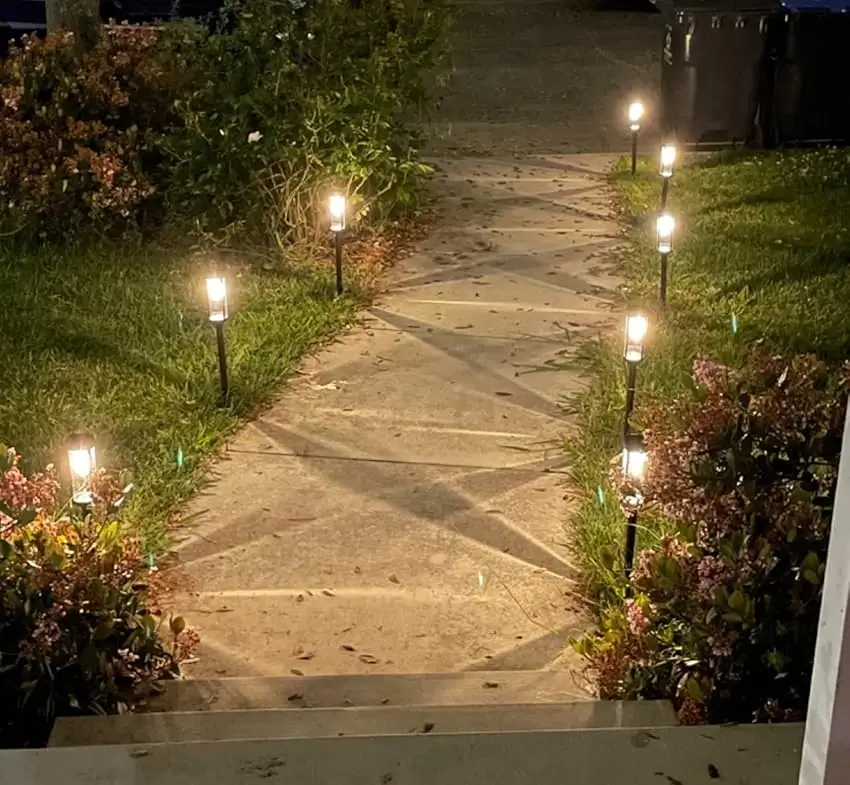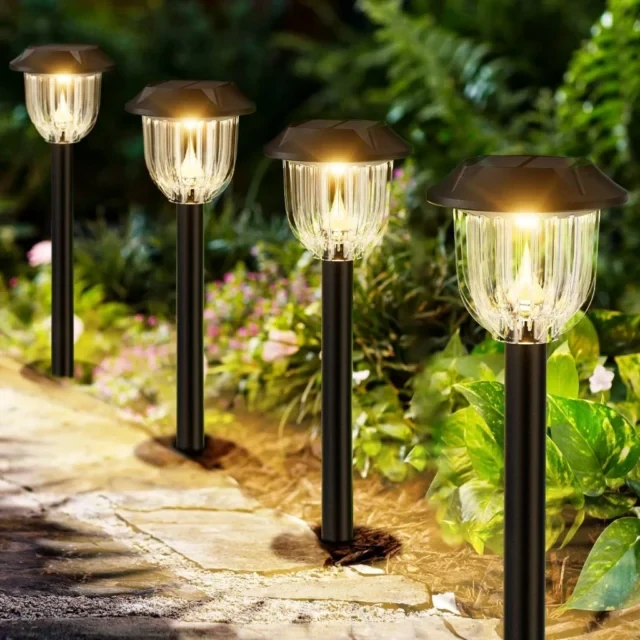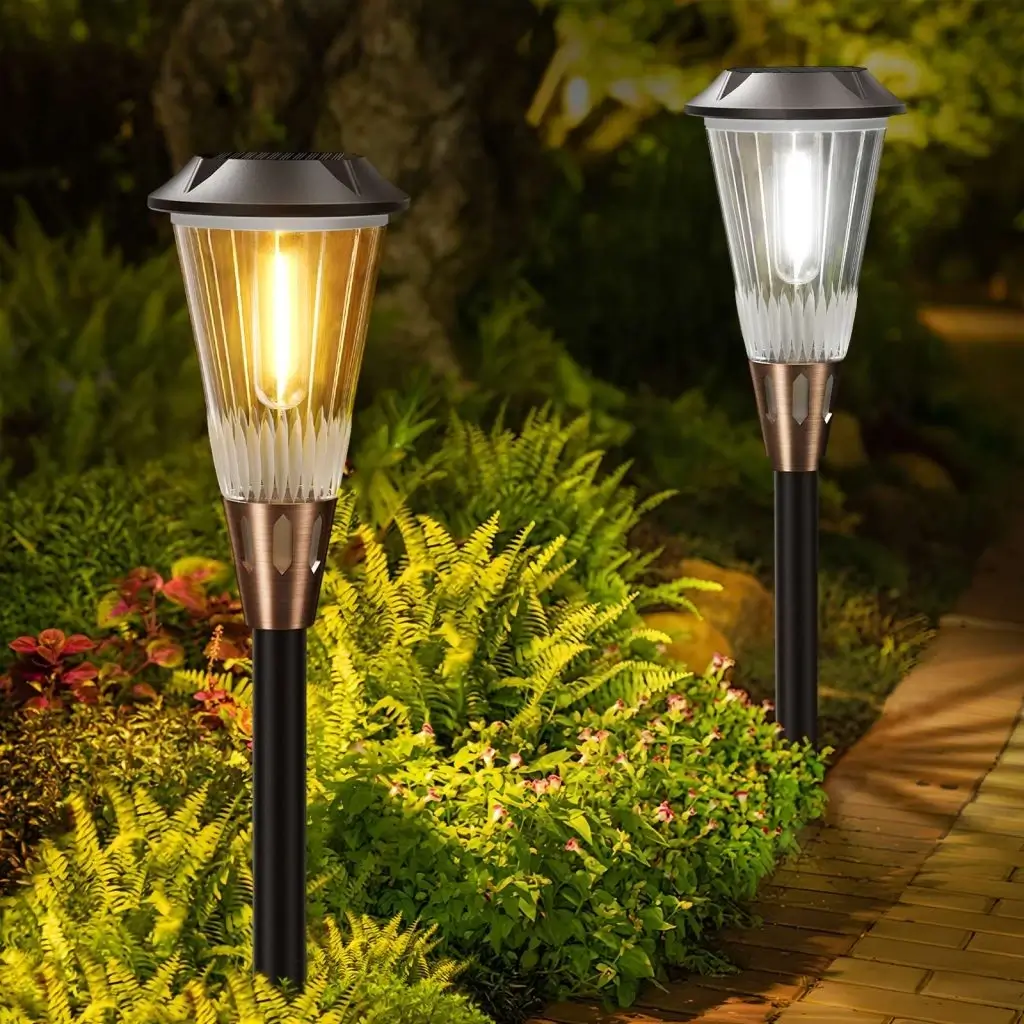Solar security lights with motion sensors are a powerful, eco-friendly solution for enhancing home safety. By illuminating dark areas and deterring intruders, these solar-powered motion lights combine sustainable technology with advanced sensor capabilities. This article explores how solar outdoor lights with sensors improve security, explains how sensors work, highlights top products like Bitpott’s Solar Motion Sensor Security Lights, and provides installation tips for optimal performance.

Why Solar Lights Enhance Home Security
Solar motion sensor lights offer a cost-effective way to protect your home without increasing electricity bills. They activate only when motion is detected, conserving energy while providing instant illumination for driveways, patios, or entryways. Their wireless design simplifies installation, and weather-resistant solar lights ensure durability in harsh conditions. These lights deter potential intruders by creating a well-lit environment, reducing the risk of unseen activity around your property.
Key benefits include:
- Energy efficiency: Solar-powered, no wiring needed.
- Enhanced safety: Illuminates dark areas to prevent accidents or intrusions.
- Low maintenance: Long-lasting LEDs and minimal upkeep.
- Versatility: Suitable for various outdoor spaces, from solar driveway lights to solar patio lighting.
How Motion Sensors Work in Solar Lights
Understanding the technology behind solar outdoor lights with sensors helps you choose the right product and optimize its performance. Motion sensors detect movement and trigger the lights to turn on, enhancing security while saving energy.
Types of Motion Sensors
- Passive Infrared (PIR) Sensors: Most common in solar security lights, PIR sensors detect heat and movement from living objects within a specific range (typically 10-40 feet). They’re highly effective for human or animal detection.
- Microwave Sensors: Emit microwave pulses to detect motion, offering wider coverage (up to 50 feet) but consuming more power, less common in solar lights.
- Dual-Tech Sensors: Combine PIR and microwave for higher accuracy, reducing false triggers from environmental factors like wind.
Sensor Functionality
- Detection Range and Angle: Sensors typically cover 120-270 degrees, with ranges of 10-40 feet. Adjustable sensitivity allows customization to avoid triggers from small animals or passing cars.
- Timing and Modes: Most solar motion sensor lights stay on for 15-60 seconds after detecting motion. Modes include motion-only, dim-to-bright, or constant low light, as seen in Bitpott’s lights.
- Light Sensitivity: Sensors often include photocells to activate only in low-light conditions, ensuring solar efficiency by preventing daytime operation.
Advantages of Sensors
- Energy Conservation: Lights activate only when needed, extending battery life (8-12 hours on a full charge).
- Security Boost: Sudden illumination startles intruders, alerting homeowners to activity.
- Customization: Adjustable settings tailor detection range and light duration to your needs.
Top Solar Motion Sensor Lights for Security
Here are four top solar-powered motion lights for 2025, selected for their sensor performance, design, and user feedback, including Bitpott’s offering.
1. Bitpott Solar Motion Sensor Security Lights
Bitpott’s solar security lights feature a 300-lumen output, 120-degree PIR sensor with a 26-foot range, and an IP67 rating for durability. These lights are ideal for solar driveway lights or entryways.
- Sensor Features: Adjustable sensitivity, 30-second light duration, three modes (motion-only, dim-to-bright, constant).
- Functionality: 10-hour runtime, maximum power point tracking (MPPT) for efficient charging.
- User Feedback: Customers praise the bright illumination and reliable sensor, with easy wall or stake mounting. Some note reduced performance in shaded areas.
- Price: $30-$40 for a 2-pack.

2. Aootek Solar Outdoor Flood Lights
Aootek’s solar flood lights deliver 800 lumens with a 270-degree detection angle, perfect for large areas like solar patio lighting.
- Sensor Features: PIR sensor, 26-foot range, adjustable modes.
- Functionality: 12-hour runtime, IP65 rating, adjustable light heads.
- User Feedback: Users commend the wide coverage and brightness, though the bulkier design may not suit compact spaces.
- Price: $40-$50 for a 2-pack.
3. Baxia Technology Solar Motion Lights
Baxia’s compact solar motion sensor lights offer 400 lumens and a 120-degree PIR sensor, suitable for solar pathway lights.
- Sensor Features: 16-26-foot range, motion-only mode, 30-second duration.
- Functionality: 10-hour runtime, IP65 rating, easy screw mounting.
- User Feedback: Customers value the affordability and brightness, but some report inconsistent charging in cloudy conditions.
- Price: $25-$35 for a 4-pack.
4. LEONLITE Solar Motion Sensor Wall Lights
LEONLITE’s sleek lights provide 500 lumens with a 180-degree PIR sensor, ideal for solar outdoor lights with sensors.
- Sensor Features: 30-foot range, adjustable sensitivity, three modes.
- Functionality: 12-hour runtime, IP65 rating, durable aluminum housing.
- User Feedback: Users appreciate the modern design and long runtime, though installation requires precise angle adjustments.
- Price: $45-$55 for a 2-pack.
Installation Tips for Solar Motion Sensor Lights
Proper installation maximizes the effectiveness of solar security lights. Follow these steps, tailored for Bitpott’s lights but applicable to others:
- Choose Optimal Locations: Place lights in high-traffic areas like driveways, entrances, or patios. Ensure solar panels receive 6-8 hours of direct sunlight for solar efficiency. Avoid shaded spots or areas near bright streetlights, which may interfere with photocells.
- Clean Surfaces: Use rubbing alcohol to clean mounting surfaces (walls, fences, or posts) for strong adhesion or screw stability.
- Mount the Lights:
- For Bitpott’s solar motion sensor lights, use screws for permanent installation or adhesive for temporary setups. Mount 6-8 feet high for optimal sensor range.
- Adjust the light head to cover the desired area, typically 10-20 feet from the target zone.
- Position the Solar Panel: If separate, mount the panel facing south (Northern Hemisphere) at a 20-50° angle. Use stakes or adhesive for secure placement.
- Test and Adjust: Charge for 6-8 hours, then test at night. Walk through the detection zone to confirm sensor sensitivity and light coverage. Adjust settings (e.g., Bitpott’s three modes) for desired performance.
- Maintain: Clean panels monthly to remove dust or debris, ensuring consistent solar efficiency. Check for loose fittings or battery wear every 6 months.
Common Installation Mistakes to Avoid
- Shaded Panel Placement: Panels in shadows charge poorly, reducing runtime by 50-80%. Always prioritize sunny locations.
- Improper Sensor Angles: Misaligned sensors may miss motion or trigger falsely. Test and adjust angles to cover key areas.
- Overlooking Light Pollution: Nearby streetlights can prevent activation. Choose lights with adjustable photocells, like Bitpott’s.
- Neglecting Weatherproofing: Ensure weather-resistant solar lights (IP65+) are used, and seal screw holes with silicone for extra protection in wet climates.
- Incorrect Height: Mounting too low (below 6 feet) reduces sensor range; too high (above 10 feet) may weaken illumination.
Performance Insights
User feedback highlights the reliability of solar-powered motion lights:
- Bitpott: Praised for sensitive PIR sensors and bright 300-lumen output, ideal for solar driveway lights. Users note consistent performance but recommend sunny placement.
- Aootek: Excels in wide coverage, with users appreciating the adjustable heads for solar patio lighting. Some find setup time-intensive.
- Baxia: Affordable and compact, great for pathways, but less effective in low-sunlight areas.
- LEONLITE: Valued for durable aluminum build and sleek design, though some users report complex sensitivity adjustments.
Testing confirms these lights withstand harsh weather, with IP65+ ratings ensuring durability against rain and wind. Bitpott and LEONLITE passed water and impact tests, while Baxia showed minor wear after prolonged UV exposure.
Environmental and Cost Benefits
Solar outdoor lights with sensors reduce electricity costs and environmental impact, using renewable energy and long-lasting LEDs (25,000-50,000 hours). Motion sensors extend battery life by activating only when needed, making them ideal for solar security lighting. With no wiring or professional installation required, they offer significant savings over traditional systems.
Where to Purchase
These solar motion sensor lights are available at:
- Amazon: Stocks Bitpott, Aootek, Baxia, and LEONLITE with fast shipping.
- Home Depot: Offers Aootek and Baxia with in-store pickup.
- Walmart: Competitive prices for Baxia and Bitpott.
- Brand Websites: Bitpott and LEONLITE provide direct purchases with warranty details.
Conclusion
Solar security lights with motion sensors are an effective, sustainable way to enhance home safety. By understanding sensor technology—PIR, microwave, or dual-tech—you can choose lights like Bitpott’s solar motion sensor lights for reliable performance. Proper installation, with attention to sunlight exposure and sensor angles, ensures optimal solar efficiency and security. Avoid common mistakes, shop at trusted retailers like Amazon or Home Depot, and enjoy the benefits of solar-powered motion lights for a safer, well-lit home in 2025.


Leave a Reply